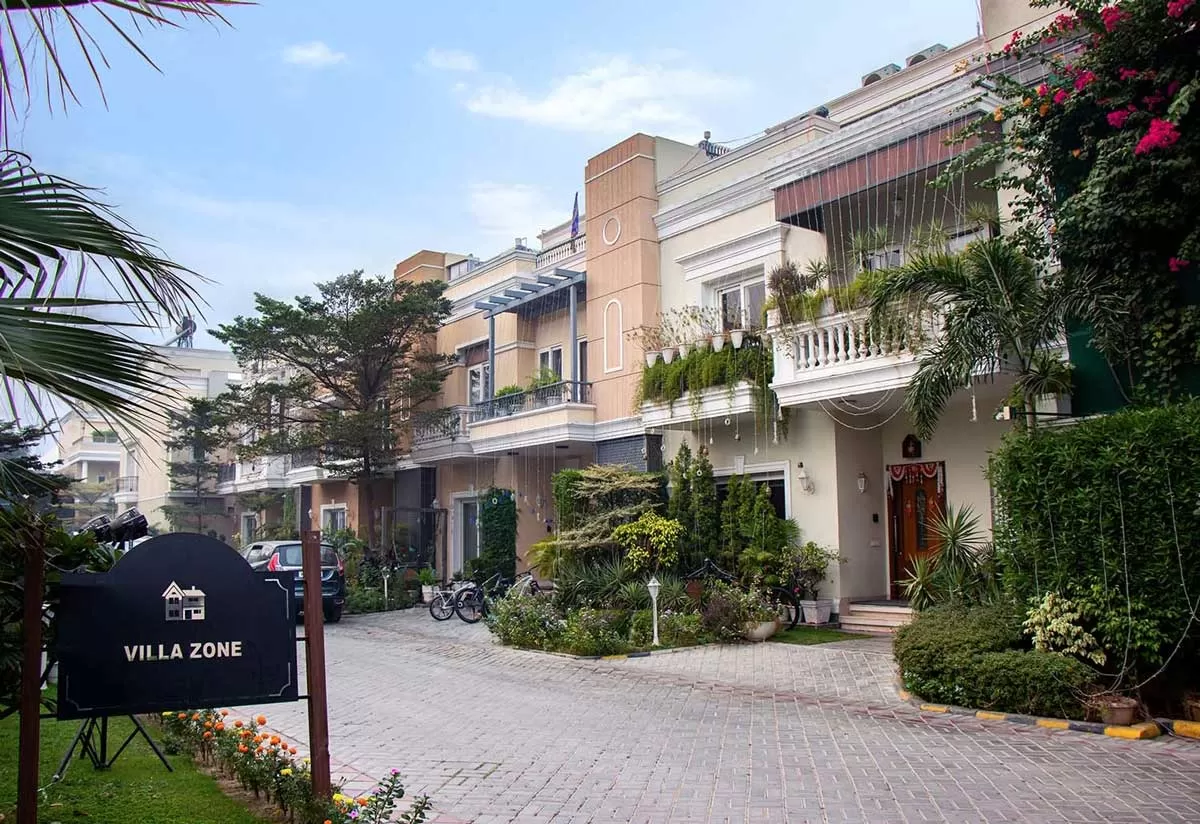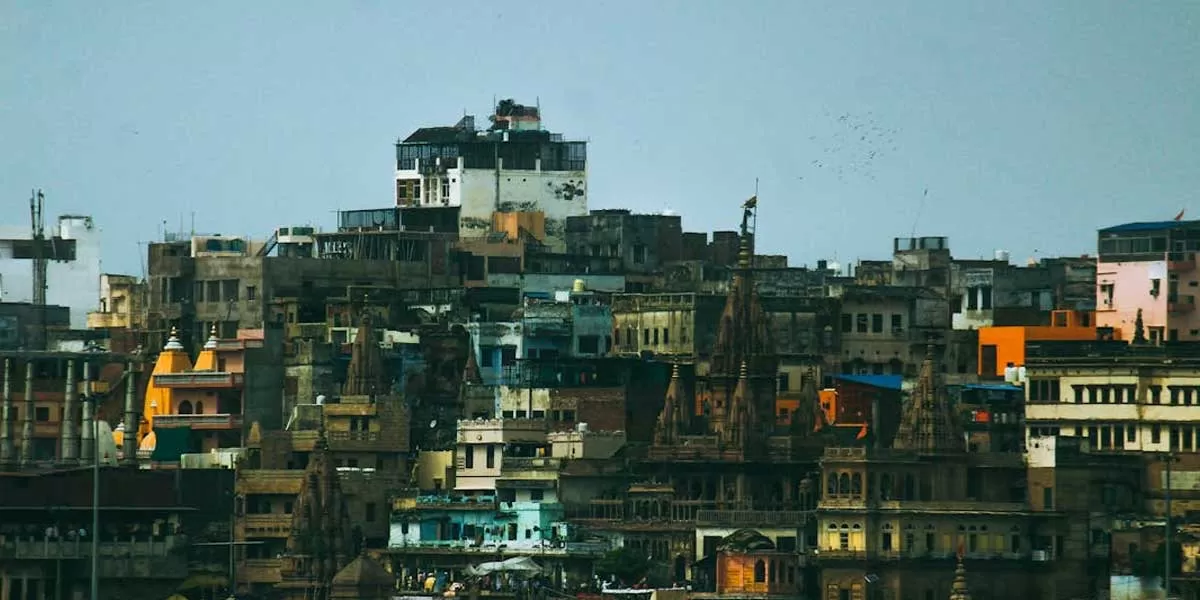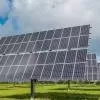- Home
- Infrastructure Transport
- AVIATION & AIRPORTS
- Infrastructure development set for a boost as the government looks to build a New India by 2022

Infrastructure development set for a boost as the government looks to build a New India by 2022
<span style="font-weight: bold;">At a Glimpse<br /> Roads: </span>Plans to construct 83,677 km of roads, highways, greenfield expressways and bridges at Rs.7 lakh crore.<br /> <span style="font-weight: bold;">Metro-rail:</span> Over 24 projects lined up for development.<br /> <span style="font-weight: bold;">Railways:</span> Indian Railways looking at giving out large projects of 200-300 km length each.<br /> <span style="font-weight: bold;">Ports:</span> Government firmly focused on upping mechanisation at existing ports under Sagarmala.<br /> <span style="font-weight: bold;">Airports:</span> AAI's current annual investment at around Rs.3,000-4,000 crore expected to grow in five years.<br /> <span style="font-weight: bold;">Renewable energy: </span>India targeting the installation of 100 GW of solar energy by 2022.<br /> <span style="font-weight: bold;">Affordable housing:</span> Infrastructure status has made this segment a key development driver.<br /> <span style="font-weight: bold;">Irrigation/dams:</span> 285 new projects considered at Rs.1.5 lakh crore under PMKSY.<br /> <br /> <span style="font-weight: bold;">Opportunities for developers </span><br /> and contractors are multiplying as projects across key infrastructure sectors are unveiled. CW presents a round-up of the next-gen infrastructure on the anvil and the likely gains for construction equipment vendors: <p></p> <p> <span style="font-weight: bold;">Roads</span><br /> The government recently unveiled ambitious plans to construct 83,677 km of roads, highways, greenfield expressways and bridges in phases at Rs 7 lakh crore. By 2022, 34,800 km of highways will be built, including 24,800 km under the Bharatmala Pariyojana, at Rs 5.35 lakh crore, and 10,000 km as part of the ongoing National Highway Development Project. Plenty of other Centre and state-funded opportunities are arising.</p> <p>'We look forward to pitch for appropriate opportunities, particularly in the northern region of the country, which is our stronghold,' says<span style="font-weight: bold;"> Yogesh Kumar Jain, Managing Director, PNC Infratech.</span></p> <p>As the roads sector does not have high levels of underutilised equipment, Jain sees the upcoming projects as having a positive impact on demand for plant and equipment for highway construction. PNC Infratech, in particular, will procure equipment to augment its existing fleet to implement newly secured projects and build a pipeline for the future. 'We will add stone crushers, wet-mix macadam plants, excavators, graders, front-end loaders, backhoe loaders, tandem rollers, soil compactors, hydras, transit mixers, tippers, concrete pumps, boom placers, etc,' he says.</p> <p>Considering the highly competitive road sector environment and narrow margins in construction, Jain says developers will analyse the cost of hiring vis-a-vis the ownership cost, the nature of work, the possibility of redeployment and the economic life of equipment. Also, given that striking an optimum mix of owned and hired equipment is a key factor for success, a few construction firms are sure to decide in favour of hiring. However, he says the overall trend will be to buy equipment. 'We would also prefer buying over hiring,' he affirms.</p> <p>Eventually, Jain believes demand for new equipment will rise because the inventory of equipment available on hire will also fall short of the ever increasing demand. <span style="font-weight: bold;"><br /> </span></p> <p><span style="font-weight: bold;">Metro-rail</span><br /> India's existing metro-rail network in eight cities, spread over 370 km, is expanding at a fast pace with over 24 projects lined up for development. (For more on Metro Opportunities, turn to page 108.) </p> <p>These include the Delhi Metro Rail Phase-IV (140 km), Chennai Metro Rail Phase-II (104 km), Bangalore Metro Rail Phase-I (102 km) and the Hyderabad Metro Phase-II (83 km).</p> <p>'With our experience of building India's first and second metro rail projects in Kolkata and Delhi respectively, and current engagement with the Mumbai Metro Line 3, Pune Metro Rail Project and the Bangalore Metro Rail Project, we will be actively looking at bidding for all the major metro-rail projects,' says <span style="font-weight: bold;">Arun Karambelkar, President & CEO, HCC.</span></p> <p>With major metro-rail contractors having utilised their existing equipment fleet, Karambelkar expects these upcoming opportunities to spur fresh investment in construction equipment, predominantly in tunnel-boring machines (TBMs), boomers and jumbos, and other bridge-building equipment. </p> <p>'At HCC, our focus is more on the underground sections of metro-rail projects, for which we may have to buy more tunnelling equipment like TBMs and boomers. This decision will be made on a case-to-case basis when a project is awarded.'</p> <p>According to him, 'The trend will be towards owning or buying equipment rather than hire or lease because ownership ensures better control on timely deployment and utilisation of tunnelling equipment and bridge construction equipment, which is critical to the success of metro-rail projects.'</p> <p> <span style="font-weight: bold;">Railways</span><br /> Plans to create India's first high-speed rail services from Ahmedabad to Mumbai and Delhi to Chandigarh have grabbed the spotlight in the rail sector. However, these projects, which are still in the planning stage, will not be the focus for contractors in coming quarters, says <span style="font-weight: bold;">Sunil Srivastava, Managing Director, Balaji Railroad Systems. </span>'Near-term opportunities include projects under the Sagarmala programme,' he says.</p> <p> 'And, with the Railways Minister planning to increase the pace of electrification to about 30 km per day, EPC contracts for the electrification of rail lines may be tendered faster than usual, creating a spike in demand for construction equipment as well as materials such as cement and steel.' </p> <p>What could especially be considered low-hanging fruit for contractors are projects to set up dedicated rail lines for the transportation of natural resources, tendered by JVs created between the Indian Railways and the governments of mineral-rich states such as Chhattisgarh, Jharkhand, Karnataka and Odisha. 'We expect 2,000-2,500 km of such rail projects to emerge, which will be attractive for being well-funded and time-bound,' Srivastava adds. However, the opportunities arising from all these thrusts are likely to be in the realm of the dozen-odd large contractors with rail experience, he reckons, with the Indian Railways looking at giving out large projects of 200-300 km length each.</p> <p>'We are seeing plenty of growth opportunities in railway infrastructure, mainly in the East and Northeast,' says <span style="font-weight: bold;">Ashok Mehta, Chairman and Managing Director, Metcon India Realty & Infrastructure.</span> 'Rail projects are boosting demand for quarrying, crushing, concreting and earthmoving construction equipment.'</p> <p>Interestingly, Srivastava foresees demand for construction equipment to be tilted towards hiring instead of outright purchase. 'An asset-light model would be more competitive, especially considering that much of the construction equipment deployed for rail projects is common to the roads sector, such as earthmoving equipment, which is why procurement is associated with a significant time lag,' he reasons. 'Contractors working to meet compressed timelines would prefer to rent equipment to get started on projects quickly.' </p> <p>With the Indian Railways partnering with Alstom for electric locomotives and GE for diesel engines, the procurement of locomotives is expected to be limited to these ventures.</p> <p> <span style="font-weight: bold;">Ports</span><br /> The government is firmly focused on upping mechanisation at existing ports and terminals under the Sagarmala programme, and rightly so, says <span style="font-weight: bold;">Rajiv Agarwal, CEO & Managing Director, Essar Ports.</span> 'Mechanised systems are driving handling capacity at existing ports across India, and will further deliver sufficient capacities to ease out congestion.'</p> <p>In keeping with this vision, all port terminal facilities developed by Essar are deep draft and fully mechanised. With the completion of ongoing projects on the west and east coasts, Essar's operational port capacity is expected to reach 110 mmtpa by 2018 from 82 mmtpa today. To maximise this capacity utilisation, Essar will focus on serving anchor customers as well as a diversified customer base, delivering the best operational parameters in the industry to all.</p> <p>Mechanisation increases demand for loaders, unloaders, tipplers, stackers, reclaimers and conveying systems, says Agarwal. An 8,000-tph ship loader, two tipplers, two stackers, two reclaimers and an array of dust separation and conveying systems were recently procured for an Essar project in Visakhapatnam Port, which is nearing commissioning.</p> <p> <span style="font-weight: bold;">Airports</span><br /> Year-on-year passenger traffic growth in the past two years has hovered around 20 per cent at most major Indian airports, says <span style="font-weight: bold;">Kishu Teckchandani, CEO, India Aviation Consulting & Support.</span> Among these are 16 or so international airports and all the major domestic airports, including Jaipur, Amritsar, Kolkata, Chennai, Goa, Patna, Bhubaneshwar, Tiruchirapalli, Thiruvananthapuram, Raipur, Indore, etc. </p> <p>To cater to this growth, Indian carriers have already placed orders for new aircrafts. But it is up to the Airport Authority of India to work towards doubling the passenger handling terminals, aircraft night parking capacities, maintenance facilities and so on at these airports in the next four years. New Delhi and Mumbai airports need terminal capacity expansions as well as new airports in their vicinity, such as at Navi Mumbai and Jewar. Cargo growth at more than 10 per cent poses similar demands on freight-handling terminal facilities.</p> <p>To rapidly increase the civil aviation footprint, India could develop 140-odd existing airstrips lying practically unused since Independence, a few of which are getting activated with the new 'Udan' initiative, says Teckchandani.</p> <p>The positive is that the Authority has sufficient funds for this expansion and growing revenues. Teckchandani pegs its current annual investment at around Rs 3,000-4,000 crore, to grow in the next five years. </p> <p>Doubling the infrastructure developed over 70 years of independent India by 2020 presents a huge opportunity for manufacturers of equipment for terminal and runway construction. The challenge will be operations. Airport operators will soon feel the pinch owing to inadequate skilled human resources for managing upcoming capacity. Teckchandani projects the manpower need for the next five years for the Authority and other operators at 8,000-10,000 people.</p> <p>India's five experienced airport developers-operators - the Authority, GMR (Delhi and Hyderabad), GVK (Mumbai), Bangalore International Airport, Hyderabad International Airport and Cochin International Airport - will prove too few. </p> <p>To boost private-sector participation and develop new expertise, Teckchandani says the Authority must allow aspiring smaller players to enter the business by lowering the eligibility criteria for the private development and management of smaller airports, instead of only focussing on getting international companies to set up shop in India. <br /> </p> <p><span style="font-weight: bold;">Renewable energy</span><br /> Growth in the renewable energy sector has been tilted towards solar installations in recent years. India's cumulative installed solar energy capacity grew from 3.7 GW to 13.6 GW between 2015 and now. At about Rs 5,000 crore per GW, this represents an investment of Rs 50,000 crore, of which about Rs 30,000 crore has been invested in the past 12 months alone, says Narasimhan Santhanam, Cofounder & Director, EAI-Energy Alternatives India.</p> <p>With India targeting the installation of 100 GW of solar energy by 2022, opportunities are ripe for component manufacturers and solar energy farm operators. For now, Santhanam expects 70-80 per cent of these investments to continue to be by government agencies. 'We don't expect government investment to dip below 60 per cent in the next five years,' he says.</p> <p>While wind farms are also seeing expansion, with 5.4 GW of capacity added in the past year alone, wind energy is slowly losing share in the renewable energy mix to solar because of practically unsustainable procurement tariffs for wind energy, which fell close to Rs 2.60 per unit in recent auctions, as per Santhanam. As a result, the year 2017 is seeing a huge drop in wind power plant installations. 'While solar energy tariffs are falling too, the cost of solar power is seeing an inherent drop, and so to a certain extent, a steep fall in solar power tariffs are sustainable, though companies should be careful not to bid too low and hurt themselves as some have done recently. Overall, we are bullish on our outlook for solar energy compared to wind power.'</p> <p>Solar energy is largely a semi-conductor-based precision engineering industry with a high percentage of components such as cells coming from overseas, whereas wind energy is a heavy engineering industry, demanding large cranes and generators for installation. </p> <p>If the tilt towards solar energy continues, Santhanam expects the construction equipment industry to feel the impact, at least moderately.</p> <p> <span style="font-weight: bold;">Affordable housing</span><br /> According infrastructure status to affordable housing has made this segment a key development driver. (Turn to page 130 for interview with Hardeep S Puri, Union Minister of State (I/C), Ministry of Housing and Urban Affairs.) Already, one and two-BHK apartments made up 85 per cent of all sales in the Mumbai Metropolitan Region earlier in 2017, according to a Cushman & Wakefield report. Areas beyond Thane, where land is inexpensively available, saw the highest number of overall projects get underway, typically for affordable housing. Other cities also have bright prospects for affordable units. </p> <p>(See story on Housing on page 120.)</p> <p>Provident Housing, a Puravankara company offering premium affordable housing, is venturing into Mumbai as well as Goa and Kochi to 'de-risk geographically', says Ashish R Puravankara, Managing Director, Puravankara, while simultaneously expanding in geographies where it already has a presence, such as Pune and its home turf Bengaluru.</p> <p>The need to deliver projects on time has brought a paradigm shift in the preferred construction methodology for affordable housing. 'In the past five years, we have seen a shift from the deployment of regular traditional methods to latest construction technologies that reduce overall construction time,' says Puravankara. 'For instance, precast technology allowed us to deliver over 1,000 homes in 24 months at Provident Sunworth in Bengaluru.'</p> <p>This preference of developers is likely to amplify with the Real-Estate Regulation Act (RERA) starting to see implementation. 'To deliver our typically large projects of over 1,000 homes, we are looking at proven construction technologies that enable building faster, better, and with premium quality,' he adds. 'Being a 'Category A' listed player, we always engage with leading contracting companies for our projects, who have the execution skills to support our vision and the scalability and resources to be able to service our business and, most important, our customers.' </p> <p> <span style="font-weight: bold;">Irrigation/dams</span><br /> The increasing frequency of drought across India has put the focus on planning to increase water storage capacity, scientific ways to avoid water wastage, and methods to stop farmer suicides owing to water shortage-induced crop losses. Efforts to build more dams and extend irrigation are notable in Maharashtra, Andhra Pradesh, Karnataka, Uttar Pradesh and the Northeast states, according to <span style="font-weight: bold;">Ashok Mehta, Chairman and Managing Director, Metcon India Realty & Infrastructure</span>, a pan-India infrastructure developer.</p> <p>Maharashtra proposes to increase irrigation coverage from the present 18.1 per cent to 40 per cent in the next five years. Andhra Pradesh is speeding up 28 irrigation projects. All these opportunities span tank filling, micro, medium and large irrigation, drip irrigation, and the generation of power through installation of solar panels over canals, etc. Under the Pradhan Mantri Krishi Sinchayee Yojana, 285 new projects are being considered, entailing an investment of Rs 1.5 lakh crore by the Central Government. Thirty river-linking projects are also in the pipeline, with three - Ken-Betwa, Daman Ganga-Pinjal and Par, Tapi-Narmada - worth Rs 80,000 crore to be rolled out in a month or so.</p> <p>Additionally, Mehta cites the need for a relook at existing dams, especially those over 50 years old, in the light of rapidly depleting groundwater. 'Local small dams, check dams and pond projects that are environmentally less risky, faster to complete and less resource-intensive to construct and maintain must also be considered,' he says. New irrigation and dam projects will create massive employment opportunities, boost the steel industry, and increase demand for fabrication specialists and hiring and manufacturing agencies offering earthmoving equipment, concreting equipment, erection equipment (typical large cranes), electrical equipment, hydraulic equipment and water-gauging sensors, adds Mehta.</p> <p>'Robust investment in infrastructure development will strengthen the country's GDP,' he says. 'We must all support it.'</p> <p> With these sectors driving demand for construction equipment, exhibitors are gearing up for the upcoming Excon in Bengaluru. Read on to know more...</p> <p> <span style="font-weight: bold;">- Charu Bahri</span></p>

Vardhman Amrante to Invest Rs 13.5 Bn in Punjab
Vardhman Amrante, the real estate arm of Oswal Group, has announced plans to invest Rs 13.50 billion in Punjab over the next three years. The investment will span various sectors, including residential, commercial, hospitality, industrial, and allied developments, with a focus on Ludhiana and other rapidly growing regions in the state.Chairman and Managing Director Adish Oswal emphasized the company's commitment to transforming Punjab's urban landscape through high-end projects that set new benchmarks for quality and innovation. The funding for these initiatives will primarily come from intern..

Sundaram Home Finance to Raise Rs 60 Bn in FY25
Sundaram Home Finance has announced plans to raise over Rs 60 billion in the current financial year (FY25) to support its expansion strategy. The company will raise the funds through a mix of National Housing Bank refinance, bank debt, debentures, and fixed deposits.The move follows a strong financial performance. Net profit rose by 26 per cent year-on-year to Rs 715.7 million in the January–March 2025 quarter, up from Rs 568 million. Disbursements during the quarter reached Rs 19.29 billion, compared to Rs 14.69 billion in the same period last year.For FY25, total disbursements grew by 29 p..

UP Targets 6 Mn Rural Homes by FY26
The Uttar Pradesh government has set an ambitious goal to construct 6 million (60 lakh) rural homes under the Pradhan Mantri Awas Yojana-Gramin (PMAY-G) by the fiscal year 2025–26. This initiative aims to address both the existing housing backlog and accommodate new eligible families identified through updated surveys.As of now, approximately 4.5 million (45 lakh) homes have been built under the scheme in the state. The remaining 1.5 million (15 lakh) homes will cover both pending constructions and new beneficiaries identified through the Awas+ survey conducted in 2018.The PMAY-G scheme, lau..
Latest Updates
Advertisement
Recommended for you
Advertisement
Subscribe to Our Newsletter
Get daily newsletters around different themes from Construction world.
Advertisement
Advertisement
Advertisement
subscribe to the newsletter
Don't miss out on valuable insights and opportunities
to connect with like minded professionals














